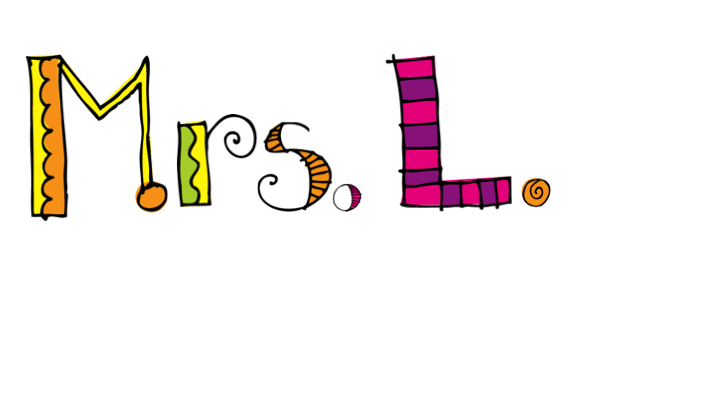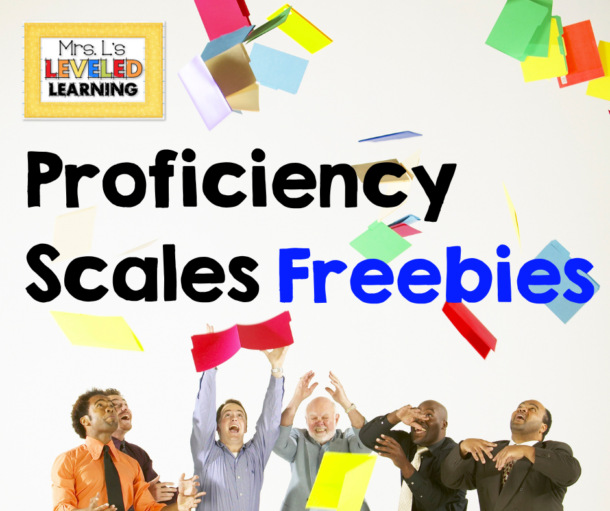What is standards based grading?
First of all what is standards based grading? Standards Based Grading is a shift in focus. Students track mastery in the standards, instead of earning points toward a subject grade. In traditional grading systems, the final grade is a bit ambiguous. It’s a combination of points from several different assignments. In a Standard Based Grading system, lessons and assignments are focused on a specific standard. Students are assessed according to their level of PROFICIENCY. We’ll come back to this word in a minute! Standards Based Grading can be more helpful in targeting student strengths and weaknesses. Teachers are able to plan more specifically, i.e. “DIFFERENTIATE”, to support students level of understanding. Standards Based Grading relies on pre and post testing, as well as formative assessments in between. This series of assessment gives teachers the feedback they need to modify instruction. It also tells students exactly what to work on next!
“Proficiency scales are the ultimate Standards Based Grading tool”
– Melanie LiCausi, Mrs. L’s Leveled Learning

How is this done?
Every learning standard is broken down into 4 levels of Differentiation. These Posters lead students up a progressive learning path that mirrors the way they develop concepts. The 4 levels are sequential: From easiest-hardest: (Recall/Retrieval, Comprehension, Analysis/Application, and Knowledge Utilization/Synthesis). Aligned to Bloom’s or Marzano’s Taxonomy of cognitive skills. To learn more about how these scales work, click here.
“Instead of an overall grade for a subject area, Subject area is further broken down into specific topics that were covered…”
– ROBERT MARZANO, Author of “The New Science and Art of Teaching”
4 Learning Goal “I Can” Statements for each standard:
4. Level 4 indicates an advanced knowledge of the skill.
3. Level 3 represents proficiency in each math standard. see the stars*
2. Level 2 will include content from the previous grade level and new vocabulary that must be applied correctly for mastery of level 3.
1. Level 1 will either be derived from sub-skills of the standard, or from the background knowledge of earlier grade levels.
Students review EASY learning goals from previous grade levels in sections, “Levels” 1 and 2. These first two levels set them up to see simple examples of the connections between what they know, and what they must do this year. “Level” 3, or section 3, includes questions they should master this year. “Level” 4 includes optional enrichment tasks for your gifted and talented thinkers.
How to Use the Posters:
- Print the ones you are currently planning instruction for. (color/black and white) *Option: Display them digitally on a white board while you teach!
- Briefly review levels 1, 2, and 3 (in that order) so your students can access prior knowledge and pre-assess themselves.
- Refer to the poster while you teach and practice new skills. Students will see their progression.
*Additional Options:
- Offer examples for each level of the proficiency scale (See Assessments linked below!)
Assessments can be used as pre- and post-tests for students to demonstrate and document mastery and growth.
- Refer to the levels 1 and 2 to create appropriate modifications for targeted instruction or small group practice.
- Use Level 4 to modify or create enrichment tasks for your gifted and talented students.

How to Use the Assessments:
- Print the standards you are currently planning to teach.
(Tasks for Levels 1 – 4 fit on a single sheet of paper, two-sided.)
- You may briefly review the standard and levels 1, 2, and 3 (in that order) so your students can access prior knowledge and pre-assess themselves. OR give it cold and see how they do as a pre-assessment.
- Correct the pre-assessment, and share students’ results with them. Emphasize that this is NOT for a grade, but just to identify a starting place.
- Use their scores to plan instruction, practice, review, small groups, or homework for your levels. (Sometimes I combine 3-4 and 1-2, so there are only two groups to differentiate for.)
- Use the SAME Assessment sheet as a post-test!
Students will see their progress concretely! They should be allowed to correct old mistakes, and complete as many levels as possible to show mastery.
- Record their final level in your gradebook.
- Save the assessment in a portfolio folder to document student progress.
These are handy for parent conferences and teacher evaluations.
*Option: Use the leveled reading passages given, or assign the “ANY TEXT” worksheets as independent reading response forms! Great for homework or differentiated classroom practice.
As one teacher told me several years ago…”These Assessments have changed how I teach! I don’t think I could ever go back to teaching without them. ”

THANK YOU to Katrina T. who recently reviewed the following resource:
4th Grade Math Leveled Assessment BUNDLE for Differentiation – Growth Mindset
“I love this resource for meeting my needs with our school’s new standards based grading! It focuses on each standard separately and has leveled assessments that help justify where a child’s true achievement is whether a 1, 2, 3, or 4.”

|


Sedanafil For Sale Rnyqgb [url=https://newfasttadalafil.com/]cheapest cialis generic online[/url] Bromocriptine Buy Without Prescription Arqqsz A forced vital capacity of mLkg about L is generally an indication for intubation. Drinking Alcohol While On Amoxicillin https://newfasttadalafil.com/ – buy liquid cialis online